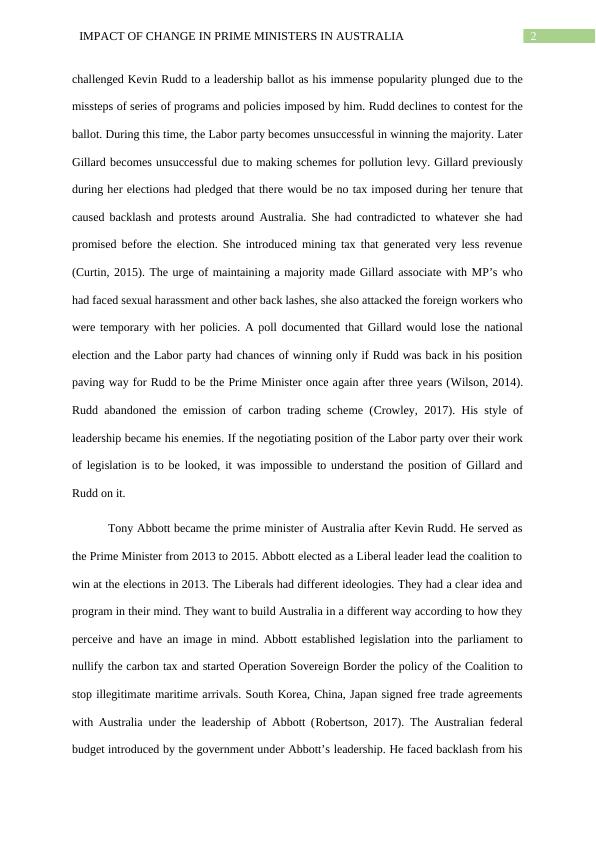Impact of Change in Prime Ministers in Australia
Marking rubric for an essay in the course Intro to Politics and Government, with criteria for quality of introduction, presentation, referencing, written expression, adherence to academic essay writing rules, understanding of theories and concepts, and quality of answer to the essay question.
9 Pages2456 Words363 Views
Added on 2023-04-17
About This Document
This paper discusses the frequent change of Prime Ministers in Australia and its impact on the country and public policies. It explores the reasons behind the changes and the consequences they have on Australia's reputation and governance.
Impact of Change in Prime Ministers in Australia
Marking rubric for an essay in the course Intro to Politics and Government, with criteria for quality of introduction, presentation, referencing, written expression, adherence to academic essay writing rules, understanding of theories and concepts, and quality of answer to the essay question.
Added on 2023-04-17
ShareRelated Documents
End of preview
Want to access all the pages? Upload your documents or become a member.
Frequent Changes in Australian Prime Ministers: An Analysis
|6
|1554
|185
Factors Contributing to the Change of Prime Ministers in Australia in the Last Decade
|9
|2714
|456
Changes in Prime Minister Position in Australia: Analysis and Effects
|9
|2494
|221
Monarchial Structure And Parliamentary System
|6
|1342
|19



